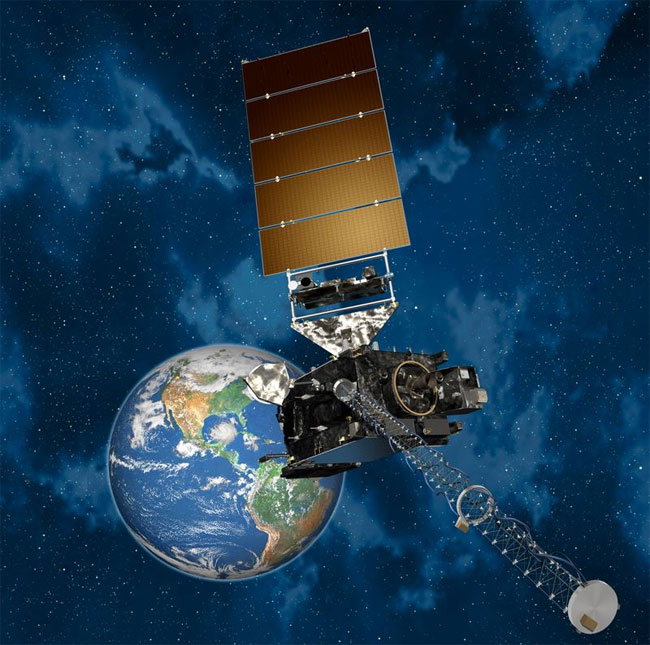US launches new generation weather satellite
The GOES-R satellite (R-Environmental Geostationary Satellite - R generation) is launched into orbit at 35,800km from Earth - almost a tenth of the distance from Earth to the Moon.
GOES-R will capture images of weather and atmospheric phenomena in the United States at a rate of 30 seconds / photo, much faster than the few minutes that current GOES satellites perform. These snapshot images will allow you to track the progress of the storms, or the smoke spreading process of forest fires or volcanic ash, to get a better response in emergencies.

Graphic images of GOES-R.
Not only does it take photos at a faster pace, GOES-R also captures images with higher sharpness and over a wider range of wavelengths than current GOES satellites. According to Stephen Volz, deputy manager at NOAA (National Oceanic and Atmospheric Administration), Silver Spring City, Maryland, "It's like moving from a black-and-white TV to a TV with a super high resolution".
The GOES-R can be compared with the Japan Meteorological Agency's Himawari-8 satellite launched in 2014, and Himawari-9 launched on November 1. All of these satellites carry advanced imaging equipment, observing the Earth in 16 wavelength ranges, from the visible light area to the near-infrared light area, providing angles Different views on atmospheric phenomena. In fact, Himawari-8 images capture the meteorologists' ability to accurately measure the spread of pollutants in East Asia.
Test
American meteorologists are testing GOES-R's new predictability compared to the existing two GOES satellites . At many times, including the 2012 Hurricane Sandy, NOAA switched one of the GOES satellites to an ultra-fast test mode, which updates data every minute.
By analyzing these experimental data, forecasters have identified atmospheric disturbances - a warning sign of major storms, since they are new, and monitor the spread. wide of forest fires - sometimes firefighters are deployed before people call to call. Other tests involve tracking the occurrence and melting of fog at major airports, helping air traffic controllers operate their flights more efficiently.

The satellite carries advanced imaging equipment, observing the Earth in 16 wavelength ranges.
In addition, GOES-R satellites are also responsible for measuring particles emitted from explosions on the Sun. It also carries a sophisticated lightning mapping device to classify light rays every 20 seconds or faster throughout the day.
GOES-R was developed jointly by NASA and NOAA in a project worth nearly US $ 11 billion, including the cost for GOES-R and three other similar satellites that will in turn be launched until 2036. .
After being launched, GOES-R will enter a temporary orbit while the operators check its devices. After that, NOAA will put it in a fixed position in the eastern or western part of the United States.
- China developed the 3rd generation weather forecast satellite
- India launches satellite to study weather
- NASA launches the most modern weather satellite to date
- NASA launches a new generation satellite
- Russia spoiled the satellite again
- Japan launches the world's most advanced satellite
- Huge spy satellite
- China launches the new weather forecast satellite
- Bolivia launches satellites in China
- Switzerland launched a satellite to look after space in 2018
- Japan launches satellite tracking global rainfall
- NASA is about to launch a new generation earth observation satellite
 Van Allen's belt and evidence that the Apollo 11 mission to the Moon was myth
Van Allen's belt and evidence that the Apollo 11 mission to the Moon was myth The levels of civilization in the universe (Kardashev scale)
The levels of civilization in the universe (Kardashev scale) Today Mars, the sun and the Earth are aligned
Today Mars, the sun and the Earth are aligned The Amazon owner announced a secret plan to build a space base for thousands of people
The Amazon owner announced a secret plan to build a space base for thousands of people